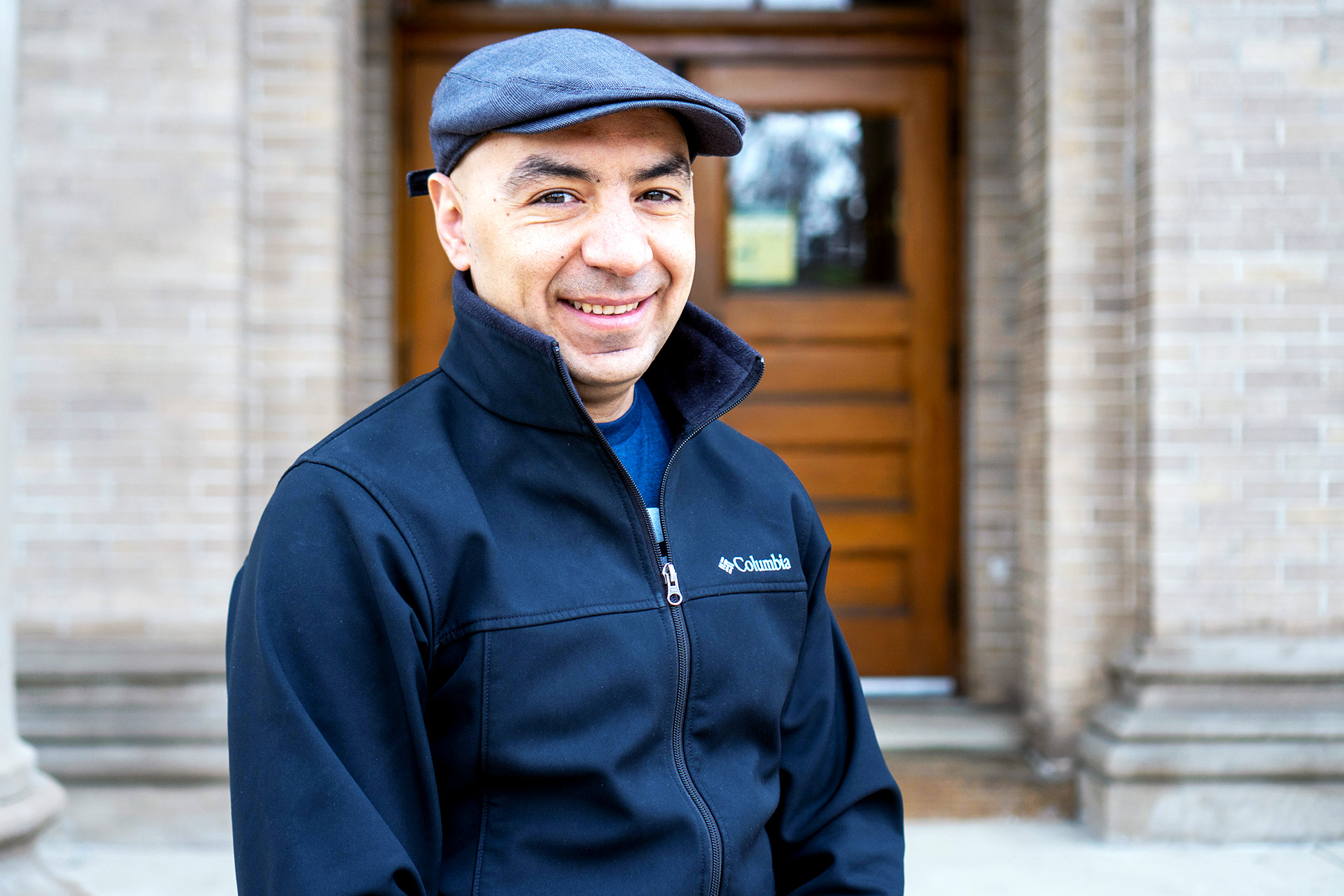
Mohammed Mehany, others received grant from U.S. Green Building Council
Impressed by work done by Colorado State University researchers, the U.S. Green Building Council (USGBC) asked Associate Professor Mohammed Mehany and Ph.D. candidate Shantanu Kumar from CSU’s Department of Construction Management to design the framework of an infrastructure resiliency and sustainability rating system.
Mehany and a team from CSU’s Institute for the Built Environment recently delivered to the USGBC an investigatory study and organizational foundation of a potential rating system.
The process began when Brian Dunbar, the executive director of the Institute for the Built Environment (IBE), spoke to the USGBC CEO during a 2020 national conference.
“When I mentioned the research that Shantanu had accomplished, along with Mohammed’s research focus, he agreed to meet with them at USGBC’s Washington, D.C., headquarters,” Dunbar said.
Kumar — a student in the joint Ph.D. program in Civil and Environmental Engineering focusing on Construction Engineering and Management — researches how to improve sustainability and resilience in transportation projects while lowering greenhouse gas emissions. Mehany studies infrastructure asset management and resilient systems and sustainability.
The USGBC awarded CSU a grant to fund the research behind exploring a new ratings system. Dunbar said the goals were to analyze various infrastructure-related systems worldwide, determine any gaps in those techniques and determine a comprehensive structure.

A flexible rating system
The USGBC could utilize any such system similarly to LEED (Leadership in Energy and Environmental Design), the most widely used green building rating method. But the infrastructure rating system could be utilized to guide almost any scale of construction.
“It could be used from airports to big roads to water infrastructure, electrical infrastructure,” Mehany said. “All of these are in play.”
Mehany added: “In the past 20-plus years, people realized that a guidance and rating system with some flexibility can be extremely helpful in identifying what a sustainable system is and how sustainable it is. It is the same thing with resilience.”
Mehany explained that a main difference between sustainability and resiliency is that the latter is more about a disaster-oriented view of structures after earthquakes, tornadoes, flooding, hurricanes or other destructive incidents.
“After those events, what is your recovery time and how can you return everything back to functionality and adapt to the future?” Mehany asked. “Those are what we are looking at within resiliency.”
The team — which included IBE research scientist and network facilitator Elicia Ratajczyk and two CSU student interns — did research including a literature review, case studies and interviews focused on compiling existing research around global sustainability and resiliency rating systems across sectors of the building industry. Those included but were not limited to heavy-civil (transportation); water/wastewater systems; eEnergy systems; building construction; aviation; and communications.
USGBC to review findings
Mehany said the ratings could include categories that will be delineated further by credits and points. Those could be scored to determine infrastructure’s sustainability and resiliency.
The system will promote the USGBC’s objective over the four pillars of addressing sustainability, resilience, equity, and health and wellness. The final report examined all USGBC rating systems and assessed their compatibility within any final scheme.
“The USGBC came to us. That is how this whole thing came to be,” Mehany said. “They can take what we’ve developed and start making it into their own.”
Dunbar said the USGBC will review the infrastructure sustainability and resiliency rating framework developed by CSU.
“Our team performed a thorough study of the existing infrastructure systems and devised a structure for how a LEED for Infrastructure system could be created,” Dunbar said. “We presented our findings and recommendations to the USGBC.
“While they are not currently in the mode of fully implementing new rating systems, the USGBC leadership was complementary and assured us that, when they are able to implement an infrastructure rating system, they would involve us.”
The Department of Construction Management and the Institute for the Built Environment are part of CSU’s College of Health and Human Sciences.